How Researchers are Using Drones in New Whale Conservation Efforts
SOURCE: PETAPIXEL.COM
APR 29, 2022

Researchers are using drones in order to study whales in new and inventive ways. Ocean Alliance, a marine conservation organization, is pioneering their use to replace older, more invasive, and more dangerous techniques.
Ocean Alliance says its mission is to protect whales and their ocean environment through research, scientific collaboration, public education, and the arts. The organization says that while commercial whaling has all but been eliminated, whale species populations are still recovering from the practice that devastated populations through the 20th century. The animals are also still in danger from fishing nets, ship strikes, and noise pollution.
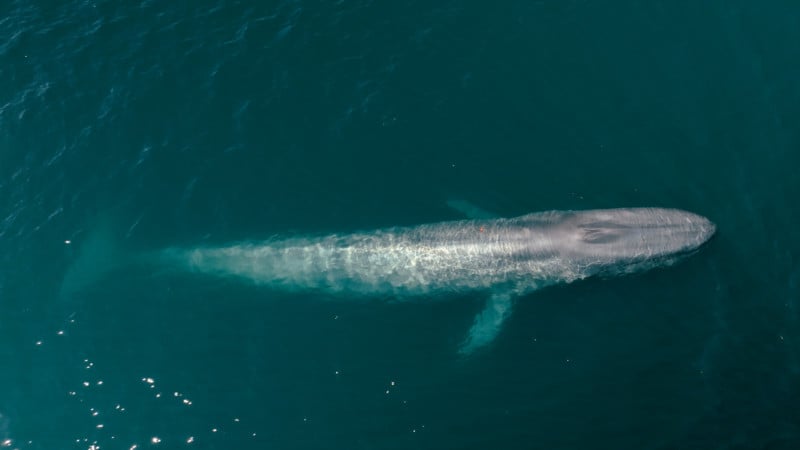
In order to understand how to help these populations rebound and prevent species from going extinct, researchers need ways to gather evidence on how human activity is affecting the whales in order to stop it.
That’s where tagging comes into play. For decades, researchers have used data tags that they attach to whales and are able to track them underwater. One common type of tag uses suction cups to hold itself to the backs of whales while its onboard array of sensors — which includes a hydrophone, accelerometer, and camera — provides a wealth of data on the whale’s hunting patterns, movements, and social interactions.
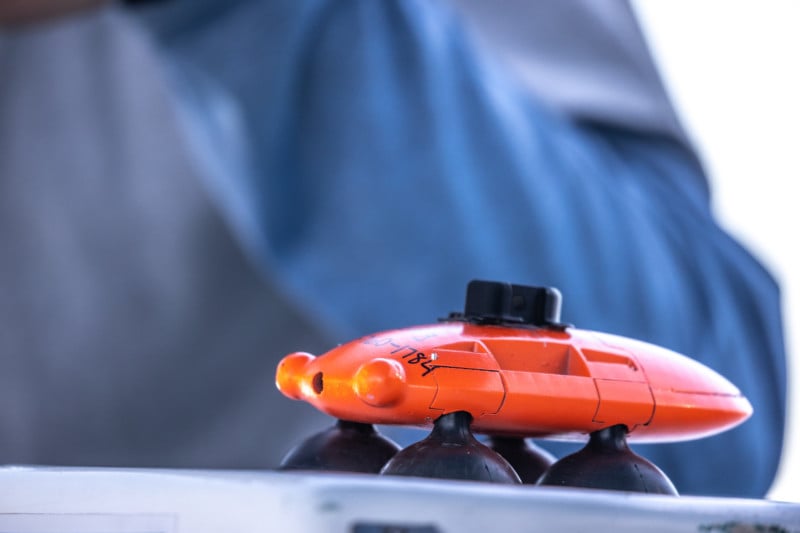
But placing these tags with traditional methods is challenging. Researchers would approach whales on boats and hoist the tracker above them with a large fishing pole-like device. Ocean Alliance says that the process was often stressful and potentially dangerous for both parties, so it started to look for ways to make it safer and less invasive.
“Generally speaking, having a team and a boat that has to get within 15 feet of a whale is highly inefficient,” Dr. Ian Kerr, CEO of Ocean Alliance, says.
That’s where drones come into play. This past February, Ocean Alliance became the first team in the world to successfully use drones in the whale tagging process. The team used a modified DJI M210s to drop the suction cup tags onto Blue and Fin whales in a way that required no chase boat, no close approach, and no 20-foot pole.
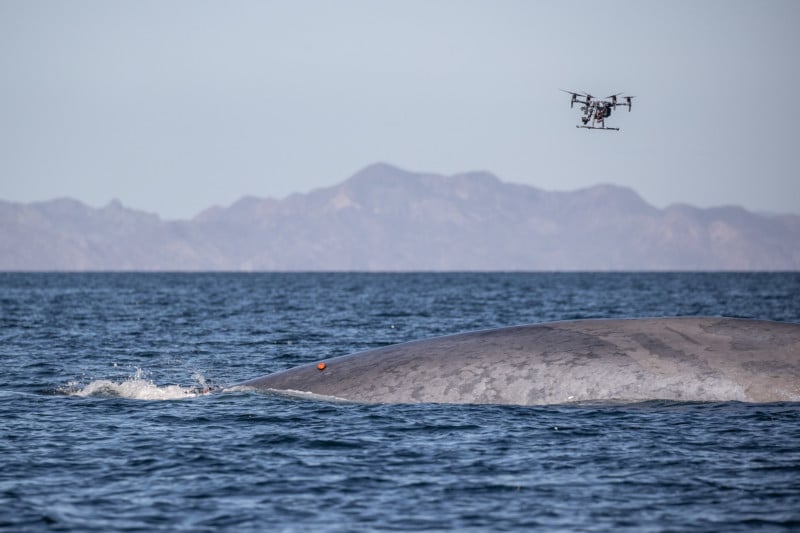
“Most of our deployments were on whales 500 meters away,” Kerr says. “Pole teams wouldn’t even have tried.”
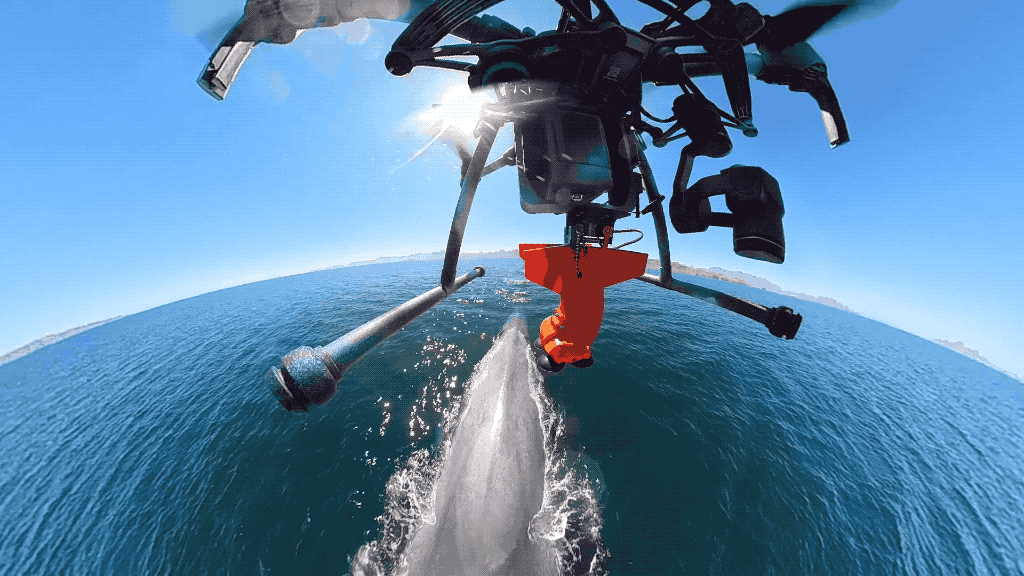
Instead, the team was able to deploy the drones and drop the tags from distances of up to 500 meters away. Ocean Alliance reported a 100% tag success rate with Fin whales using this method.
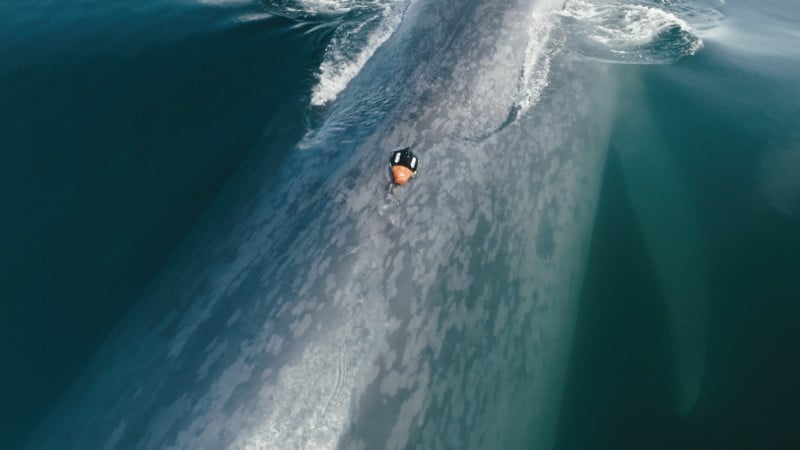
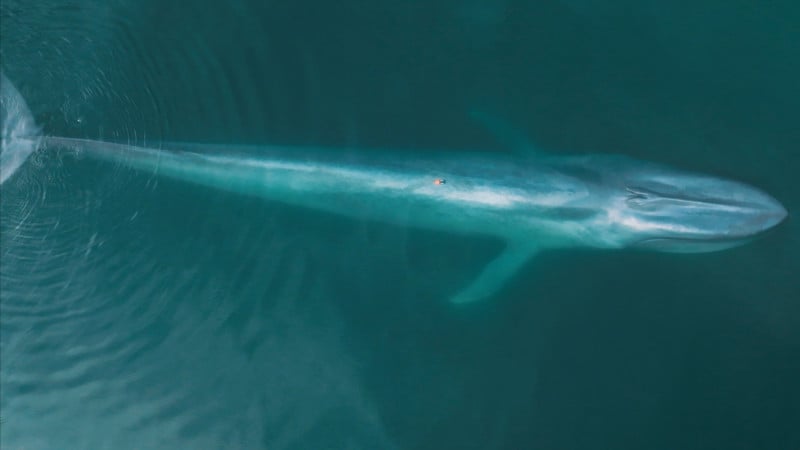
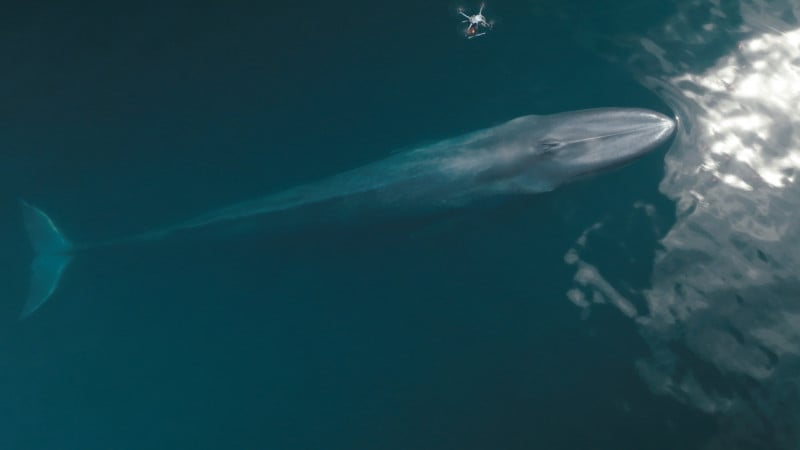
“It’s a game-changer for whales, people, and science,” Dr. David Wiley from NOAA’s Stellwagen Bank National Marine Sanctuary, who was a partner to the project and saw its success first hand, says. “In the 25 years I’ve been tagging whales, we have always dreamed of being able to place tags on animals from the air. The real-time aerial perspective allows whales to be followed underwater and researchers to be in position when they surface to quickly attach tags to them.”
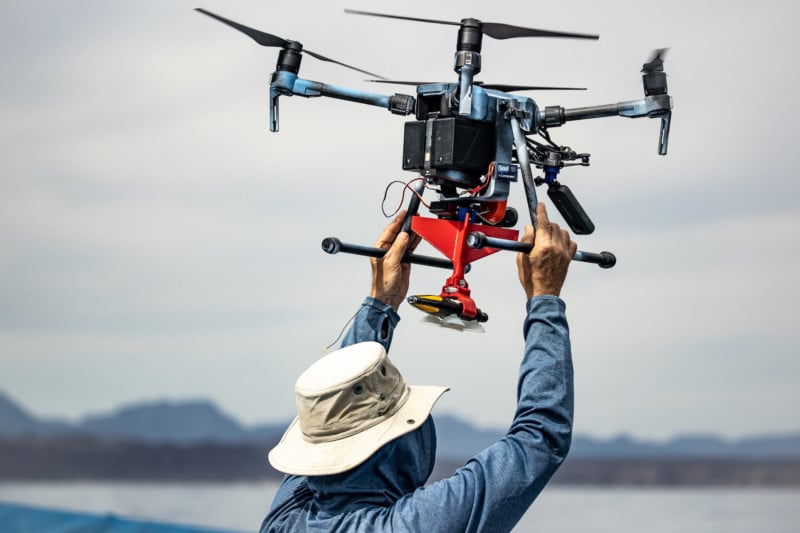
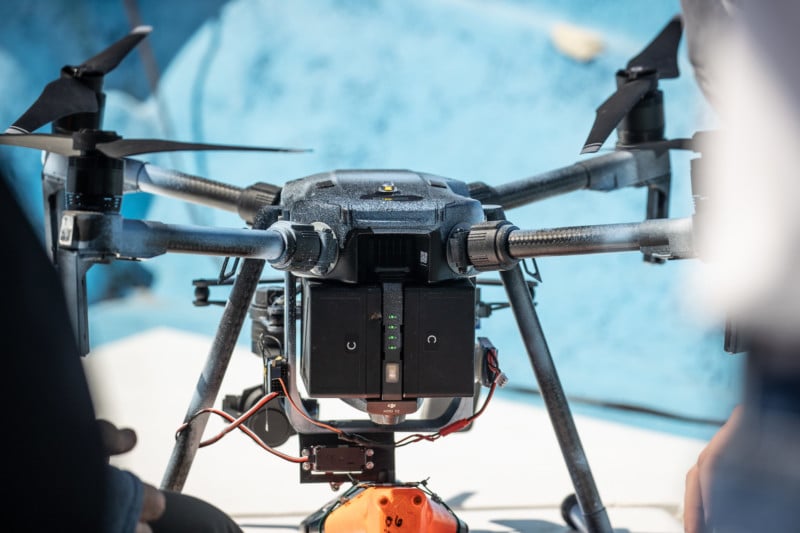
The aerial tagging system uses a set of 3D-printed parts that holds the traditional suction-cup tag in a detachable set of aerial stabilizing fins. When dropped from the air, frame ensures the tags fall at the right angle and the suction cups attach to the back of the whale. The team tested the system on land and near the water’s edge multiple times to assure that it would work properly before attempting the system in the field.
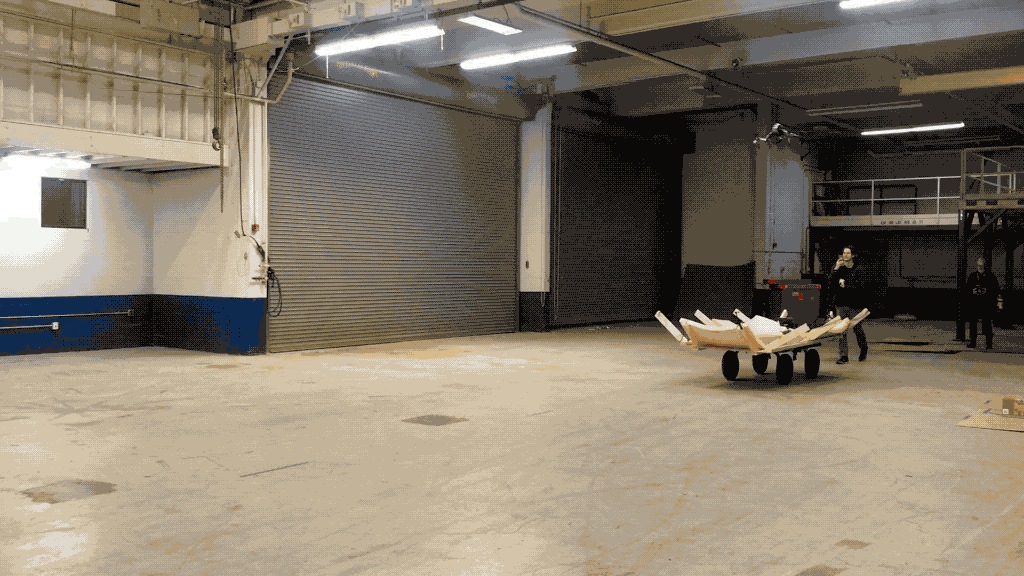
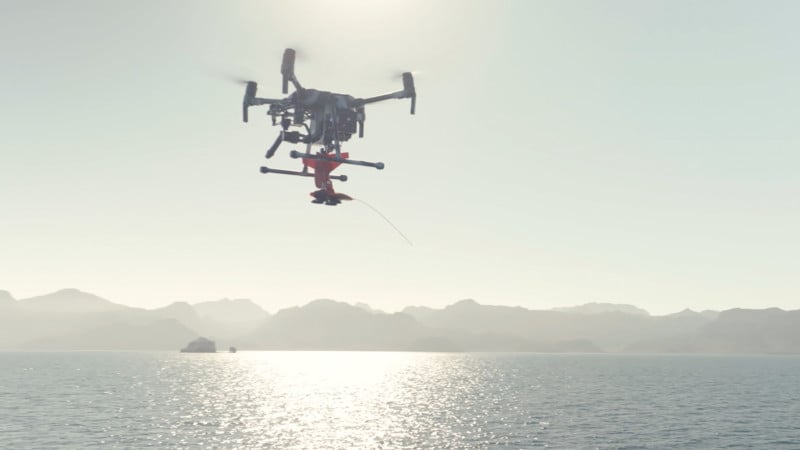
Ocean Alliance says that there are additional benefits to the aerial system: it’s a lot cheaper. What used to cost tens of thousands of dollars for additional boats and a big team of experts can now be done with a single boat and fewer people.
“For a marine biologist, we look at the cost/benefit analysis: how much is it going to cost us to collect that data? Using drones the cost per successful tag is radically cheaper. It’s a transformational tool,” Kerr says.
Image credits: Photos provided courtesy of DJI.
LATEST NEWS
WHAT'S TRENDING


Data Science
5 Imaginative Data Science Projects That Can Make Your Portfolio Stand Out
OCT 05, 2022

Coventry University expert explains what Amazon drone deliveries means for jobs and the price of a package
SOURCE: HTTPS://WWW.COVENTRYTELEGRAPH.NET/
NOV 02, 2023
This New Autonomous Drone for Cops Can Track You in the Dark
SOURCE: HTTPS://WWW.WIRED.COM/
SEP 26, 2023
Tamil Nadu government approves farm mechanisation subsidy for Garuda Aerospace drones
SOURCE: HTTPS://AGRICULTUREPOST.COM/
SEP 25, 2023
The Future Of Biomedical Transport: Drones At The Service Of Health
SOURCE: HTTPS://WWW.EMERGENCY-LIVE.COM/
AUG 25, 2023
Groundbreaking Drone Flights with Radiation Detection Pave the Way for Improved Safety on Nuclear Sites
SOURCE: HTTPS://DRONELIFE.COM/
AUG 11, 2023
Drone with sticky patches studies biodiversity by bumping into trees
SOURCE: HTTPS://WWW.NEWSCIENTIST.COM/
JUL 13, 2023




